Taxco, a Mexican city in the state of Guerrero, is well known as a center for the making of jewelry. By the 1950s it had also become the source for tin masks that were openly made and marketed for tourists. After two posts about traditional dance masks that were found on EBay™, I thought I would share some tin tourist masks from the same source. Because I have long been interested in tinsmithing, I collected these masks as folk art. Here is a typical example.
This mask is 16 inches tall and 12 inches wide. It is constructed from a number of typical elements, including the face and applied features such as the ears, and/or earrings, nose, lips, headdress, and glass marbles for the eyes.
On the back there is a strip of tin to facilitate hanging the mask on a wall. Notice how the marbles for the eyes are held in a tin cage. The construction of these masks involves numerous clever details like the caged marbles. As you can already see from the first mask, the decoration is created in two ways—by the scribing of straight or curved lines and by steel stamps. For example, the folds of the headdress, the curved lines under the eyes and over the mouth, and the lines that suggest teeth were all made with a scribing or engraving tool. The designs on the earrings that were formed by steel stamps are of course obvious.
When I was visiting Vernon Kostohryz in San Miguel D’Allende, he introduced me to a tinsmith there, and I took a lesson about the use of the Mexican tinsmith’s scriber. In the photos that follow, you can see how the scriber is held and used.
I am holding the ball end of the tool against my shoulder, in order to press the point to the metal, and then guiding the scribing of the line with my right hand. A rubber pad cushions and supports the tin, allowing the surface to deform under the pressure of the tool. In this instance I am running the point along the edge of a ruler or straightedge to inscribe a straight line, but I could also have chosen to scribe curved lines. Often such work is done freehand by a skilled artisan. Here is the result after I turned the sheet of tin over—two parallel raised lines.
In the next photo my Mexican teacher had inscribed a six-pointed star, turned the tin over, and then inscribed lines that bisected the points. Turning it over again, this is the result. The initial scribed outline is facing the viewer, while the lines on the back side that bisected the points show up indirectly as elevated folds. The flat sheet of tin has become three dimensional.
As I show additional tin masks you will see many versions of this technique. Here is a fairly simple example.
The lips on this face were outlined by scribing, as were the lines on the hair.
Here is the back of this small mask, which measures 7 inches tall and 7 inches wide. The face and the hair were made separately and soldered together, then the brows and nose were added to the front of the face.
Next a pair of small masks, each 6 inches tall and 6 inches wide.
They have been painted with bronze paint. One eye has lost its marble.
Here is a pair of slightly larger masks.
This one is 10 inches tall and 9 inches wide while the next is 12 inches tall, due to a taller headdress. The eyes, the eyebrows, the ears, and the nose are separate attachments.
The headdress of the first features stamped designs along with minimal scribing; the second relies on scribed lines with good effect.
At one extreme, some of these tourist masks are very large. This next one of tin and brass is 16 inches tall and 11 inches wide.
The following mask is even larger, 18 inches tall and 14 inches wide. The many scribed lines are obvious.
This mask reminds me of the Green Man figures found in European folklore.
I will include a few other masks of intermediate size that I find particularly interesting or attractive.
Here is a mask of a grinning woman, or is this the face of a lion? It is 13 inches tall and 15 inches wide.
I just found this one recently and it is my new favorite. Note the elaborate tongue.
The next one is spare and unusual in its design. It is 12 inches tall and 8 inches wide. Note the scribed lines on the cheeks, the headdress, and the goatee. I suspect that the wavelike lines were done freehand, but perhaps the tinsmith had a curved template. At the time of this photo the headdress was becoming detached; since then it looks less jaunty, having been firmly soldered back in place.
Next is an Indian with a beautiful six pointed star on his headdress, which was created with the scribing technique demonstrated earlier. Of course the feathers and the cheeks were also scribed. This mask is 13 inches tall and 8 inches wide.
A king mask features a stamped design—squares composed of lines of dots. The king is 12 inches tall and 10 inches wide. The nose has been covered with that stamp, as have the eyelids. The earrings were scribed.
Here is a rusty old devil mask. It is 12 inches tall and 12 inches wide. Note how the tongue was scribed.
The headdress on the next mask is elegant, another example of scribing. This mask is 12 inches tall and 10 inches wide.
This next mask is also 12 inches tall and 10 inches wide. It has a sort of crown. Look at the remarkable scribed cheeks.
Last up is an Indian Chief, with mustache, goatee, and a headdress of feathers that were all decorated by scribing. This one is also 12 inches tall and 10 inches wide.
I hope that you have enjoyed learning about the tin tourist masks from Taxco, in the Mexican state of Guerrero. In next week’s post I will introduce you to the masks and carvers of the Mixtec villages on the Pacific Coast of Oaxaca.

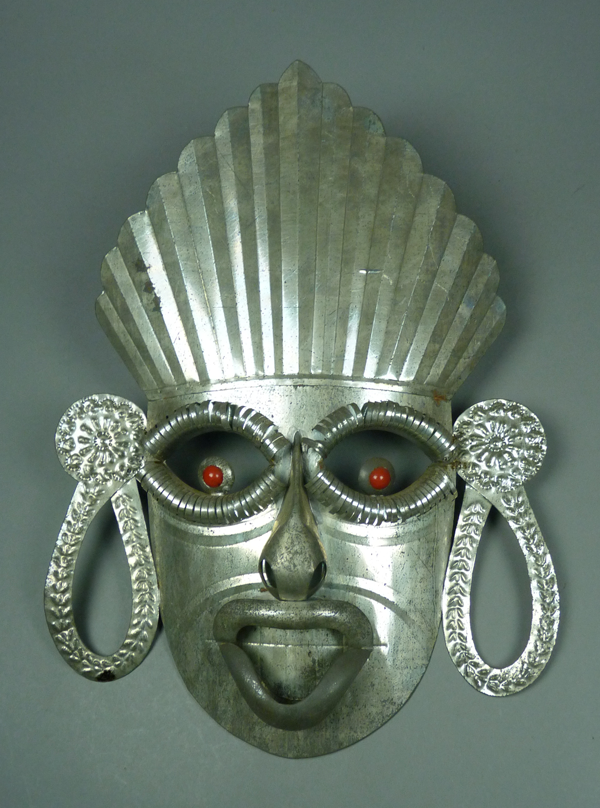
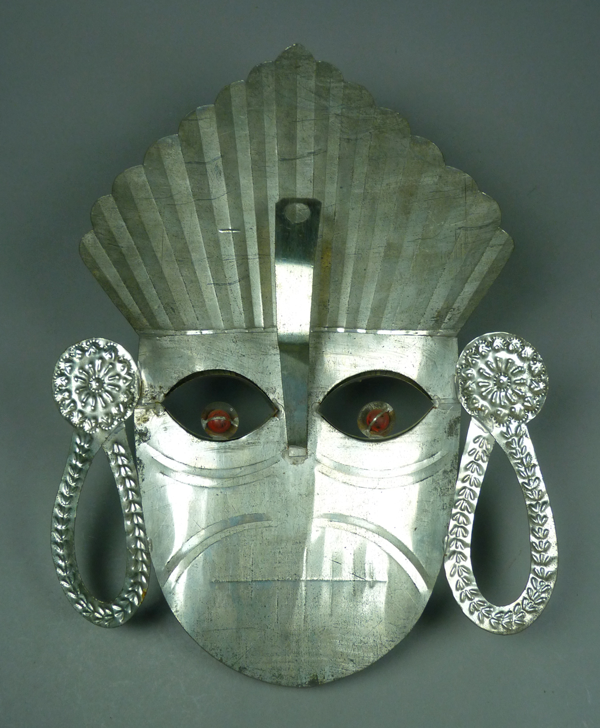
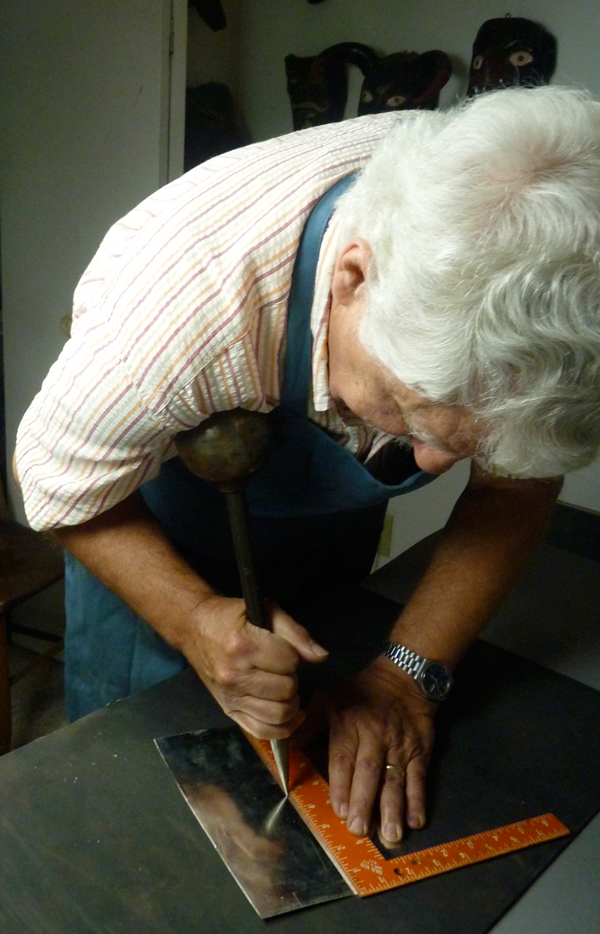
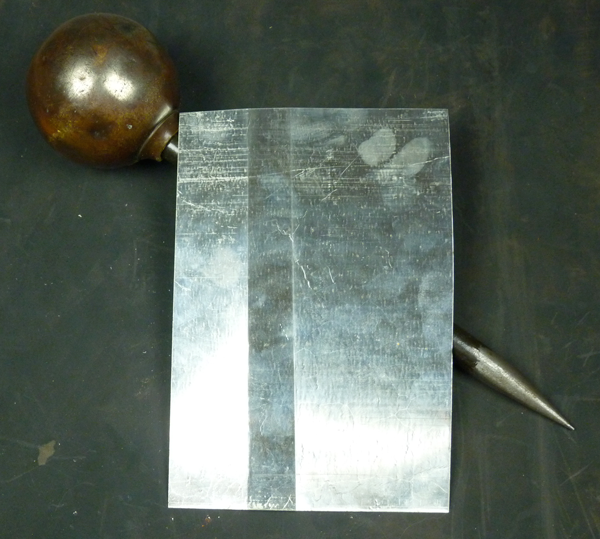
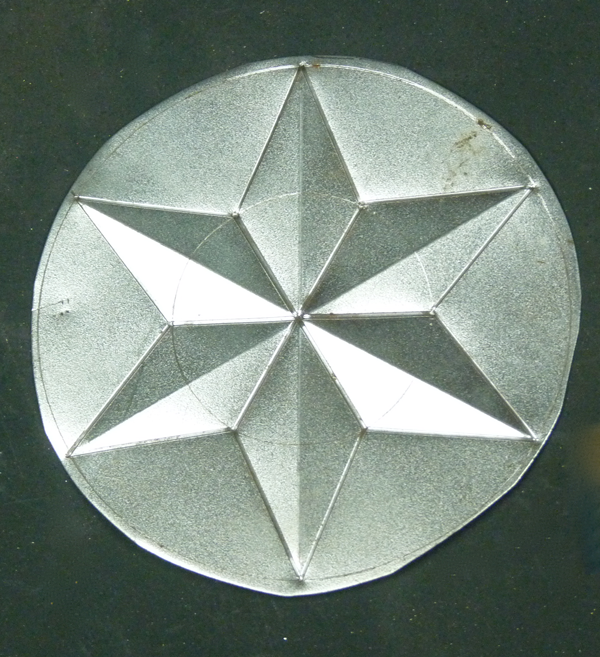


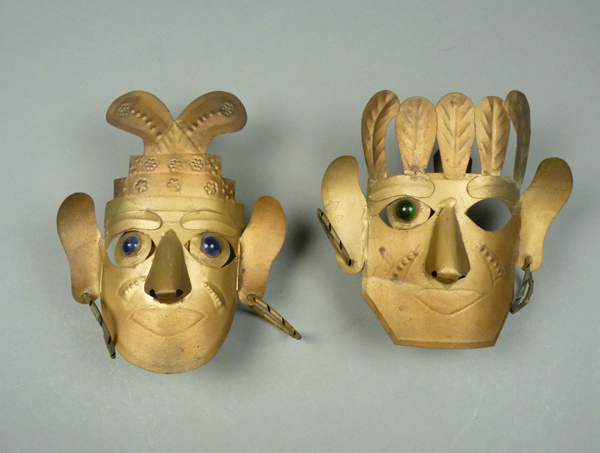
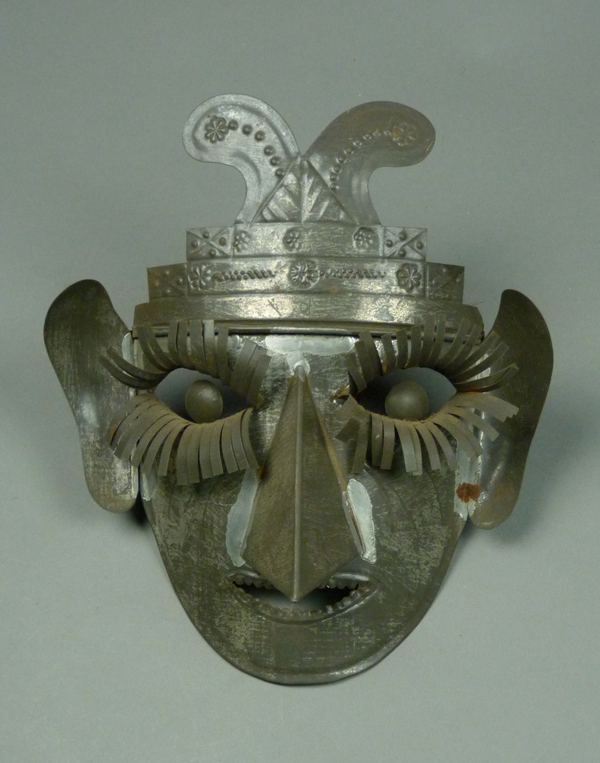
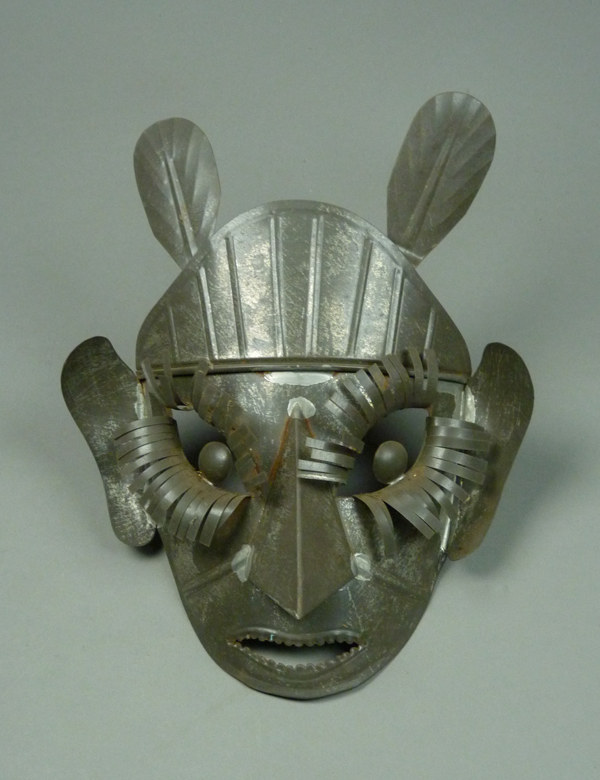
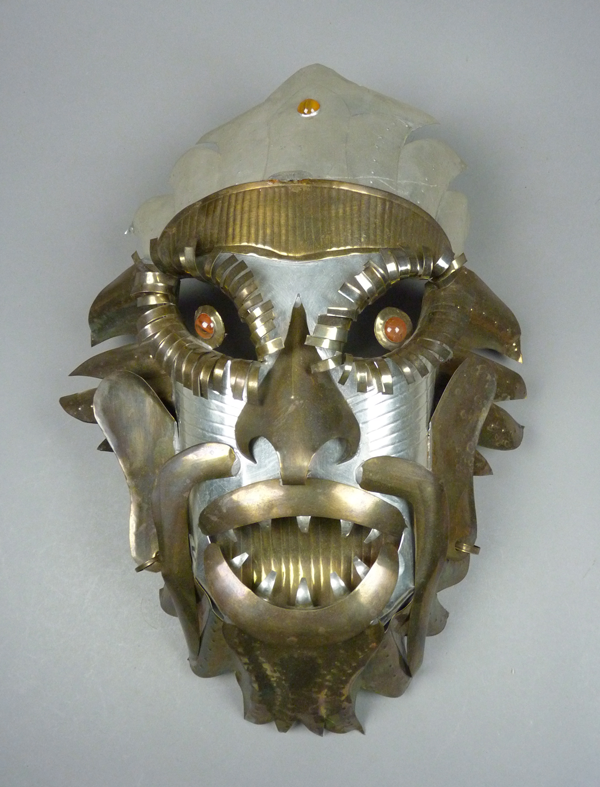

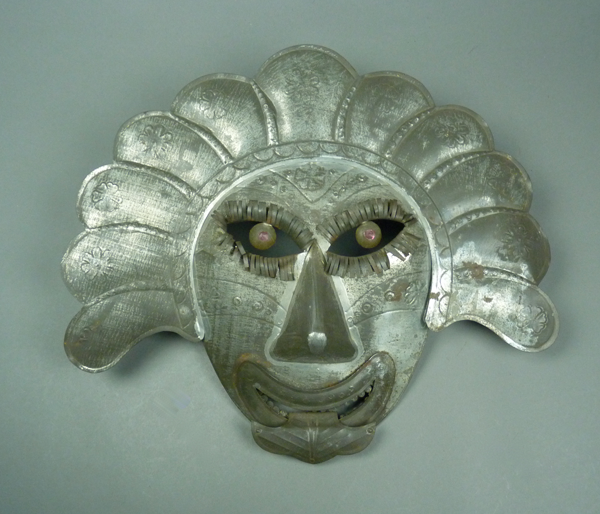

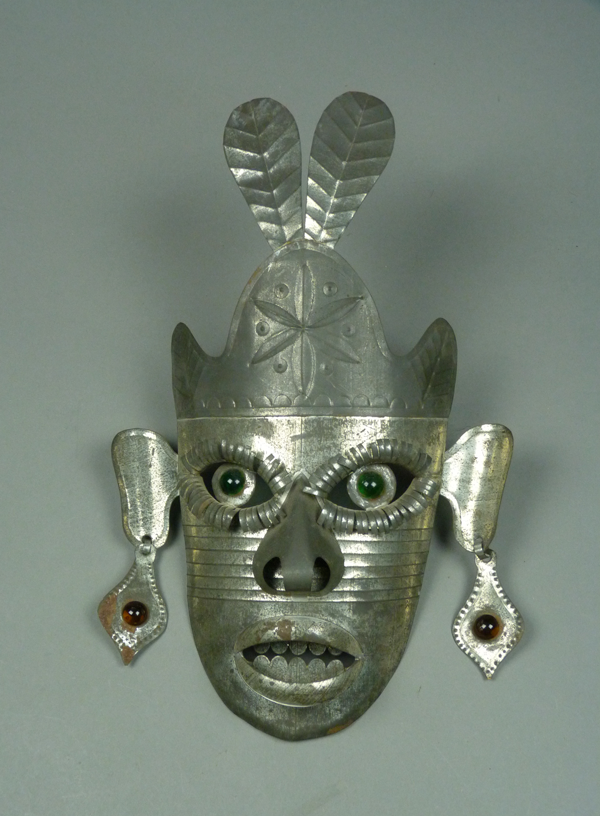
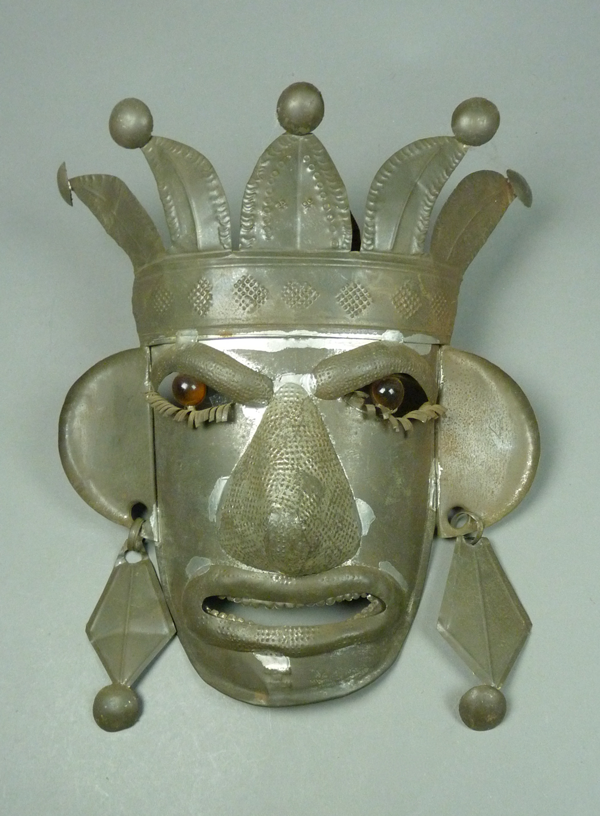
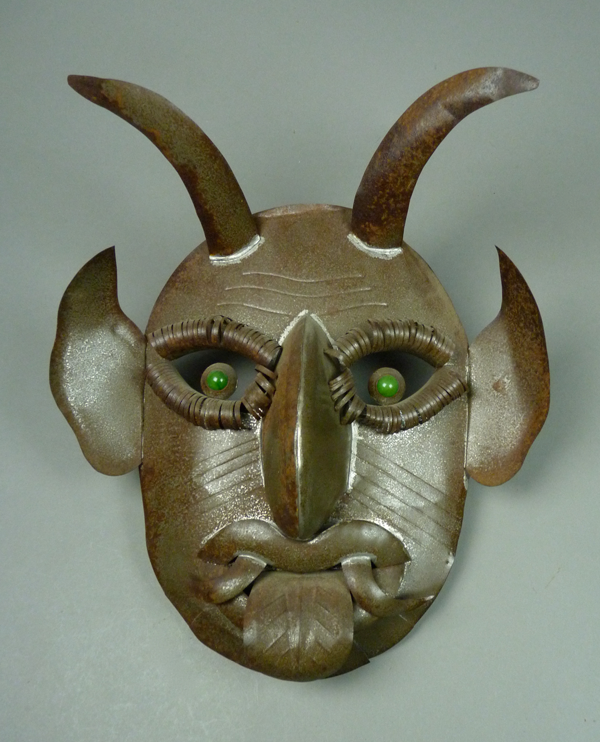

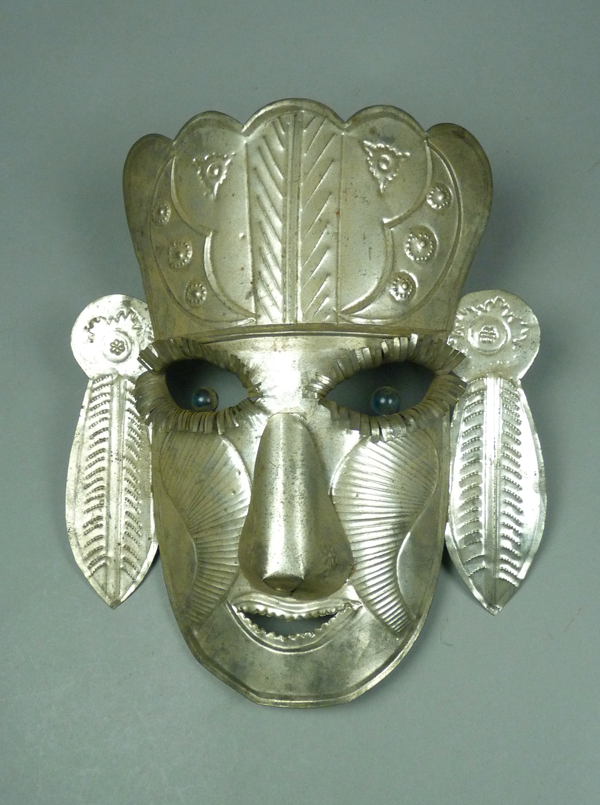
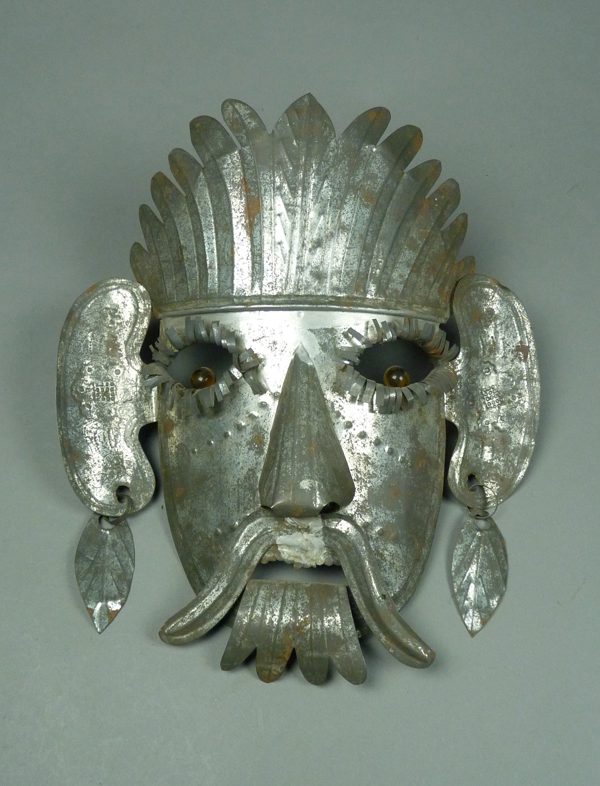
Hello,
I was recently in San Migel de Allende. I wanted to purchase a metal mask, but didn’t know where to buy the tin masks. Do you Know where I could purchase a tin mask?
Thank you!
I have 2 large tin masks I brought back from Acura Mexico several years ago they measure 27 1/2 x 21 in. They were in a patio at a bar and don’t remember what I paid for them . If I sent you a pic maybe I will know what I bought . Thank you Jim in Bowie Texas
Hi
I recently found your message buried under a lot of spam. Those tin masks are all from Taxco de Alarcón, in the Mexican state of Guerrero. Tourists have been bringing them back for 30 or 40 years. Then they sell them for very little when they get tired of them. I think they are cool because I am a tinsmith. They usually sell for $10- $30, so not something that is going to make you rich, but they are cleverly made.
Bryan